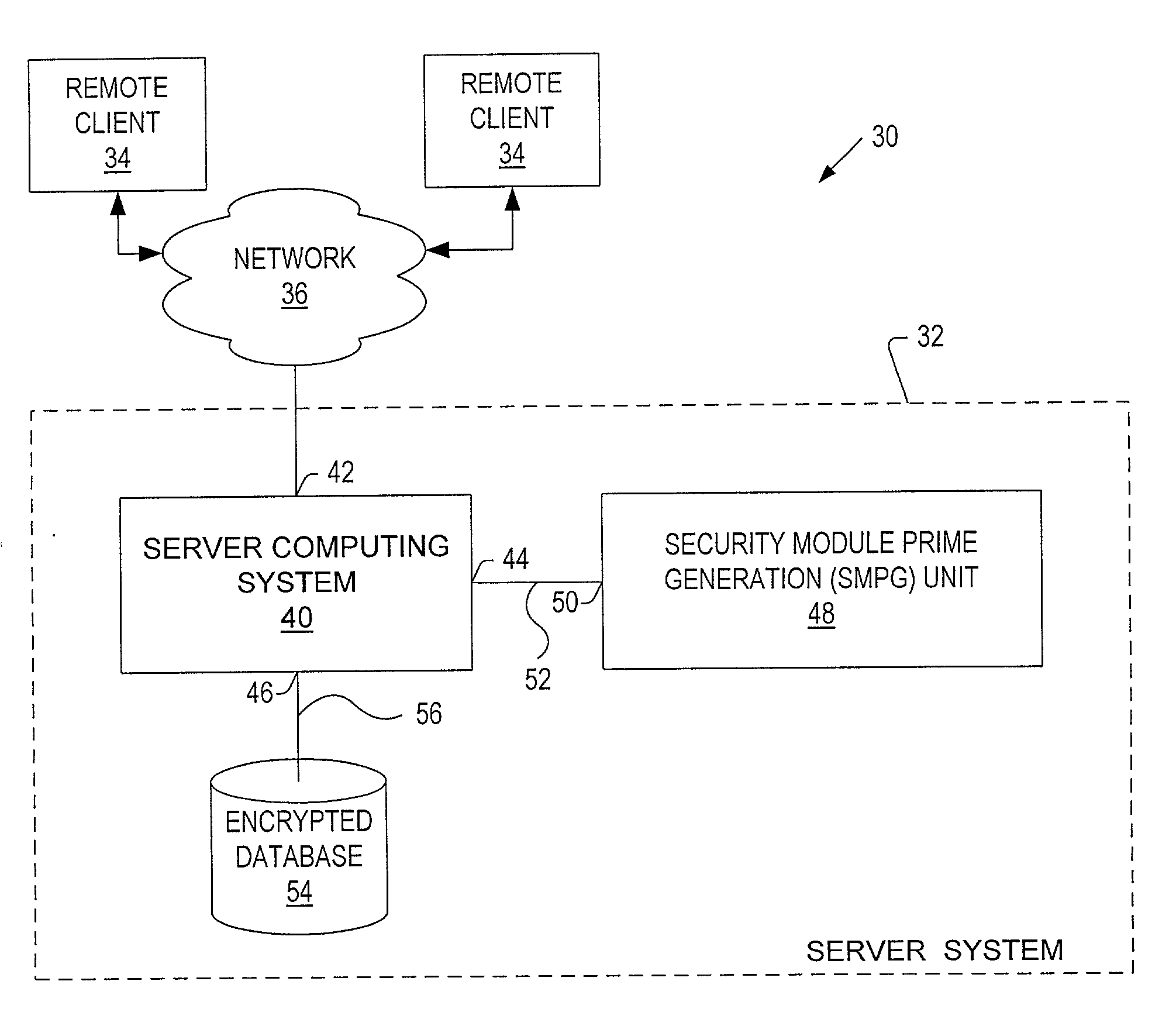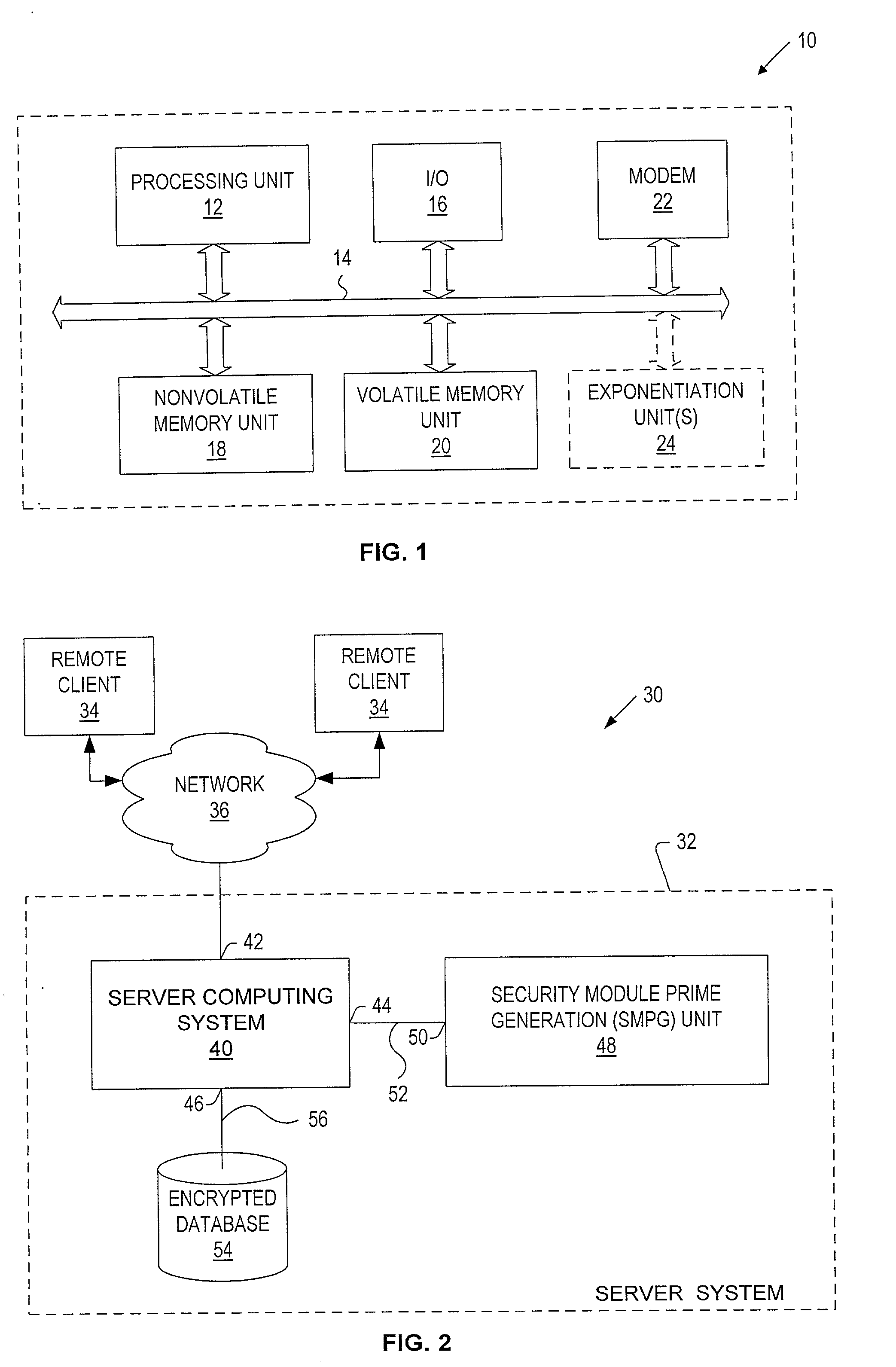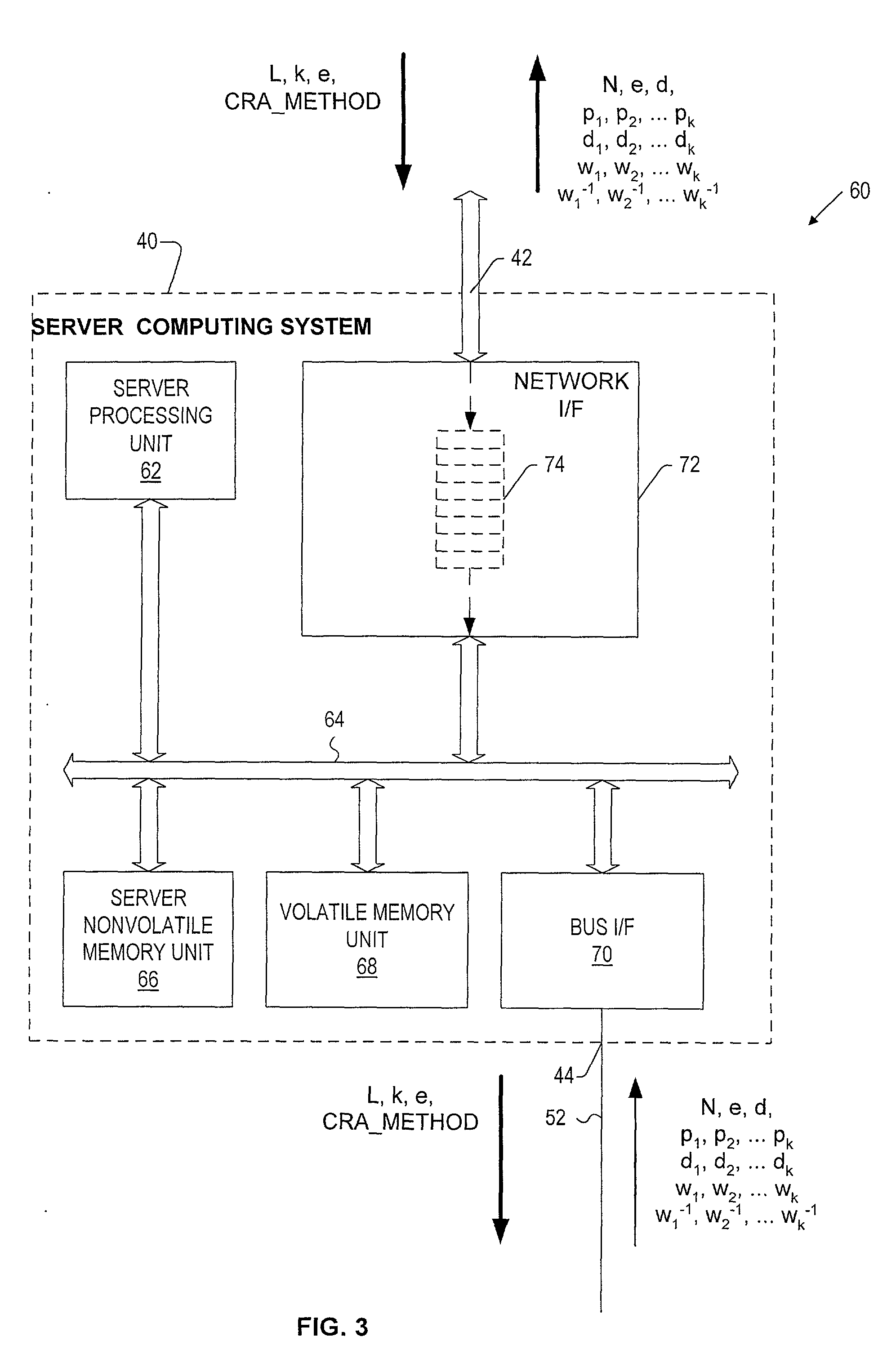Multiple cryptographic key precompute and store
a cryptographic key and multi-crypto technology, applied in the field ofprime number searching, can solve the problems of computationally difficult to determine the private key from the public key, computationally difficult to factor the composite number n into its prime factors p and q, and subject to unrelenting attempts to break, etc., to achieve high peak output rate, low latency, and high cryptographic security
- Summary
- Abstract
- Description
- Claims
- Application Information
AI Technical Summary
Benefits of technology
Problems solved by technology
Method used
Image
Examples
first embodiment
[0070]FIG. 1 shows a block diagram generally illustrating a system at 10 in accordance with the present invention for pre-computing and securely storing sets of cryptographic parameters including prime number values. As further explained below, the system provides for precomputing different types of sets of cryptographic parameters (each type having different characteristics). For use in different types of cryptographic systems.
[0071] The system 10 provides an inexpensive, low processing power implementation of the present invention. In varying embodiments, the system 10 may be a personal computer, a personal digital assistant (PDA), or a cellular telephone that is required to generate cryptographic parameters for use in cryptographic applications such as a classic two-prime or Multiprime cryptographic security applications utilizing different modulus lengths, different numbers of prime factors, and different Chinese Remainder Algorithms.
[0072] The system 10 generally includes: a p...
second embodiment
[0102] In the present invention, the length parameters L are provided by remote clients 34 (FIG. 2) along with prime number generation job requests provided to the processing unit 82 via the bus interface 92. In this embodiment, computer readable instructions stored in the system memory unit and executable by the processing unit, provide for implementing an embodiment of the parallel prime number searching process wherein a user selected array of (k×t×(y+1)) of the exponentiation units 86 are used to simultaneously execute a plurality of t probabilistic primality tests on each of k sets of (y+1) prime number candidates to yield a set of cryptographic parameters based on a modulus having a specified length L.
[0103]FIG. 5 is a block diagram generally illustrating software modules executed by the server computing system 40 (FIG. 3) and by the SMPG unit 48 (FIG. 4) in accordance with one embodiment of the present invention wherein the server system provides dynamic allocation of exponen...
PUM
 Login to View More
Login to View More Abstract
Description
Claims
Application Information
 Login to View More
Login to View More - R&D
- Intellectual Property
- Life Sciences
- Materials
- Tech Scout
- Unparalleled Data Quality
- Higher Quality Content
- 60% Fewer Hallucinations
Browse by: Latest US Patents, China's latest patents, Technical Efficacy Thesaurus, Application Domain, Technology Topic, Popular Technical Reports.
© 2025 PatSnap. All rights reserved.Legal|Privacy policy|Modern Slavery Act Transparency Statement|Sitemap|About US| Contact US: help@patsnap.com



